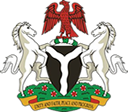The NBS website is set to undergo scheduled maintenance and will be temporarily unavailable from:.
- December 4th, 12:00 AM - December 5th, 11:59 PM.
- We apologise for any inconvenience this may cause.
- For urgent inquiries, please contact us via our social media handles.
Thank you for your patience.


.png)
.png)
.png)
.png)
.png)
.png)
.png)
.png)
.png)
.png)
.png)
.png)
.png)
.png)
.png)
.png)
.png)
.png)
.png)
.png)
.png)
.png)
.png)
.png)
.png)
.png)
.png)
.png)
.png)
.png)
.png)
.png)
.png)
.png)
.png)
.png)
.png)
.png)
.png)
.png)
.png)
.png)
.png)
.png)
.png)
.png)
.png)
.png)
.png)
.png)
.png)
.png)
.png)